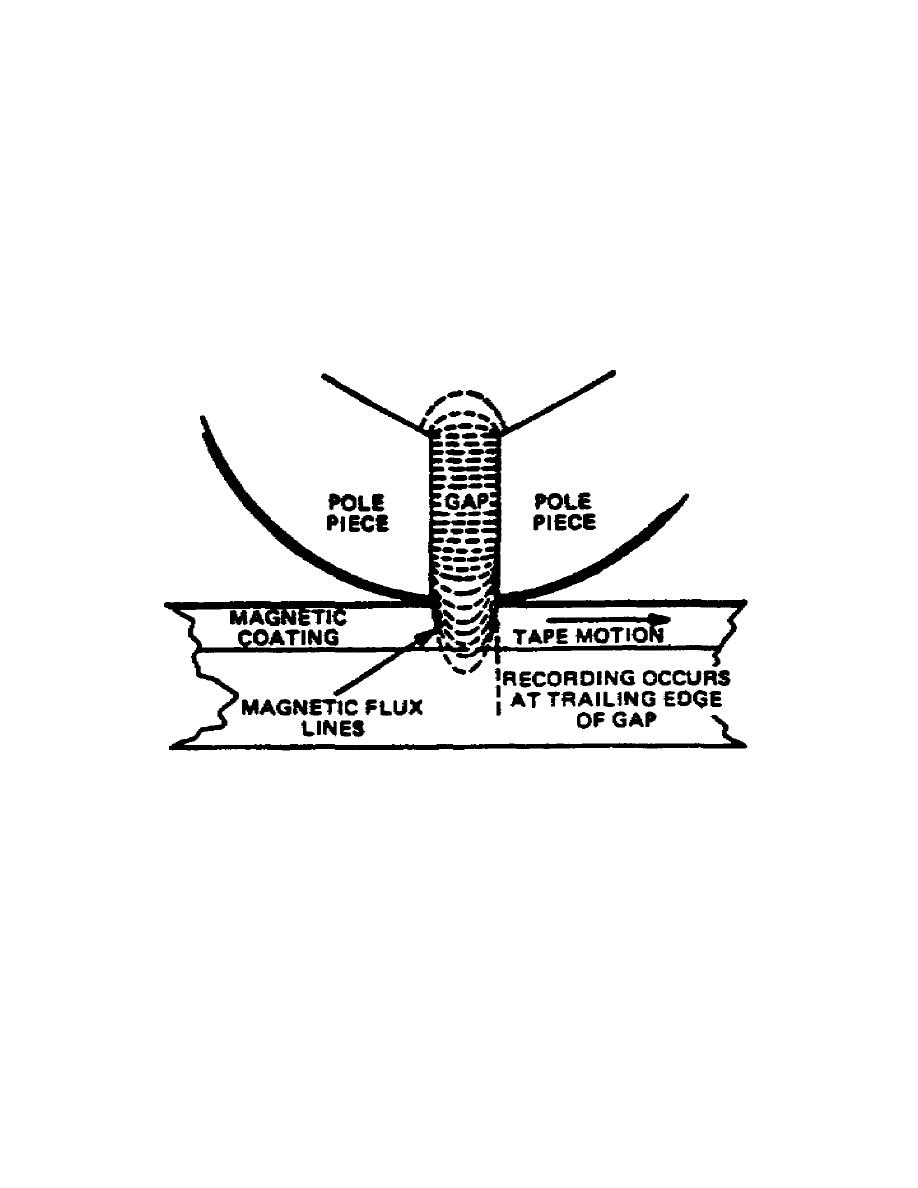
(4) Another feature of an AC erase head is a wider gap which permits the tape particles to
change direction more times, thus giving a more complete erasure of the tape.
(5) Notice that as the tape approaches and then leaves the gap in the head, the erase action
builds up from zero to maximum and back to zero. Thus, any magnetic pattern which was previously
recorded is obliterated by the action of the high-frequency bias oscillator.
d. When an alternating current is sent through the winding of a record head, a magnetic field
corresponding to the applied current is produced in the core (fig 3-5). The magnetic field has a great
deal of difficulty passing through the nonmagnetic gap in the core. However, when the magnetic
coating of the tape closes the gap, the field can easily complete its journey via the tape. The tape now
becomes magnetized in accordance with the fluctuations of applied current.
Figure 3-5. Flux lines in a recording gap
(1) The magnetic fluctuation of the tape continues until the instant the tape passes the trailing
edge of the gap. The magnetic orientation at the instant of departure from the gap edge is the pattern
that remains on the tape. For the best possible recording, the trailing edge of the gap should be as
straight and sharp as possible. A principle difference between heads of poor quality and high quality is
the definition of the gap edge. The amount of electrical signal required to produce a certain amount of
magnetic flux on one head may create a stronger magnetic flux on another head because of differences
in efficiency or elements of design. The signal level that causes distortion varies among heads of
different manufacturers. You must take these factors into account if you substitute a different make or
model of head for the one that originally came with the tape recorder.
28



 Previous Page
Previous Page
